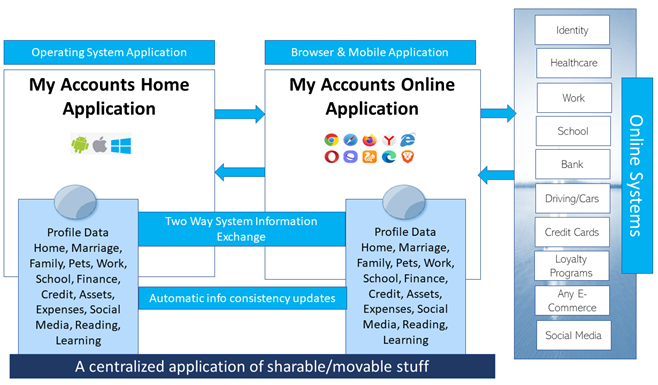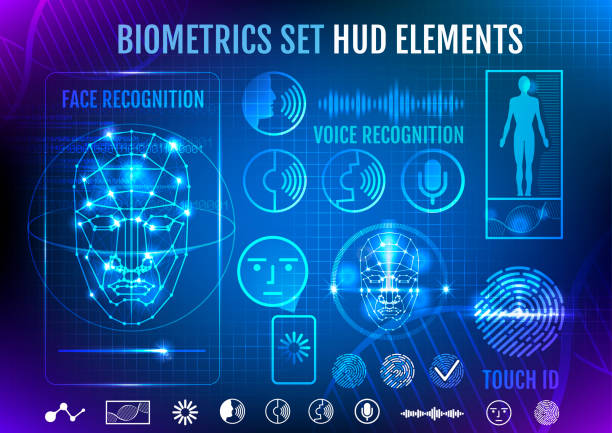Today’s Internet operates using a 1:1 Account Management ratio, when it should use a Database Approach with a 1:Many with a centralized profile identity and account management system.
This all encompassing advanced identity management system is summarized with the combination of two words: BioMetrics, that not all systems use and are perhaps designed for criminal and controlled facilities that require higher levels of security, leaving the people and all the many other types of systems, less secure, or for developers to utilize higher level security concepts in innovative ways. It does not only include identity markers that match your physical self, but also metrics on what you do, where you do it, and who you do it with. More research is required on using Algorithms to advance understanding of not just site rankings, but how the mathematical approach, using statistics can be used with personal profile and account management.
The internet systems we have available today suffer from amnesia, perhaps dementia, severe distrust, and other mild disorders. Our tracking systems are self created, vast, and varied – leaving much room for error without much industrial leadership.

People historically only physically entered storefronts to buy goods and services. With the Internet, they buy from their homes, offices, and on mobile devices. Storefronts are setup by Internet Address with individual sites following the standard checkout procedure where the user buys goods and services as a guest or creates a profile with the merchant. Each merchant provides a place for the user to manage the profile data, with options extended to historical purchases, special deals, email advertising and marketing, and credit card applications and bill payment. The current design is like the physical design, where each store owner or group of owners manage individual accounts, but the Internet allows shoppers to manage their account and access up to the minute information on their account, pay bills, and buy or return goods. The systems are integrated with Banking and Shipping Systems. Individual records of purchase are available from each merchant and from the bank, but record keeping varies. Transactions are considered secure and based upon special authentication protocols and encryption of data.
The purpose is to provide a more efficient data management system that streamlines and secures use, access, and provides a more organized presentation. The user should have a single location for the management of critical information, as well as the ability to store, access, and change all account information in one location, rather than at every single location they have an account. Integration or a Single Account Management system with connections to merchants will enable live updates using a “one-to-many” cascading update approach which is efficient data management. The features should extend well beyond basic identity and profile data, but also provide consolidated use summaries and statistics. Once accounts are setup and ‘auto-fill’ or ‘remember me’ features are used, it doesn’t seem like a problem, until there is a breach or a change in personal details, which requires an update to all sites, including the official government record. When spam or unwanted and excessive emails, or bad transactions take place, or a change in personal information is necessary, the problem becomes obvious. The current system does not operate using a database approach.
